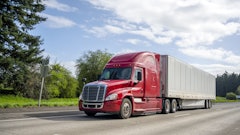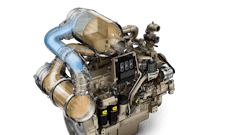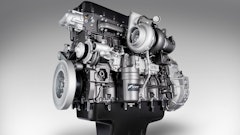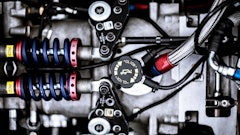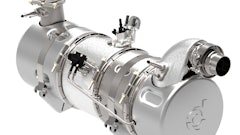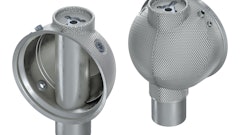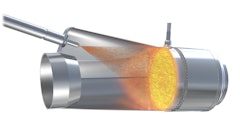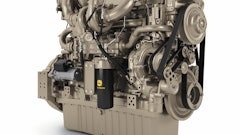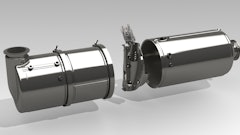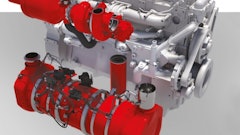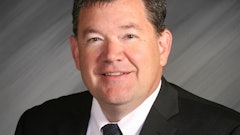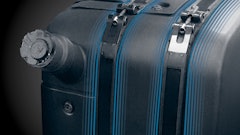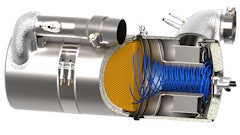Because they are so focused on diesel prices and Midwest flooding, many in the farm and construction industries may be unaware of the regulatory tsunami heading their way from California. On June 15, the state formally implemented regulations governing emissions from diesel-powered construction and airport equipment currently being used. Similar regulations for agricultural equipment are expected to be developed next year.
Although the new rules are currently limited to California, as many as 20 states are thinking about adopting them. The rules will change the financial strategies fleet managers employ to reduce emissions — from one focused on new equipment purchases to one focused on retrofits. It will also make much of their older equipment virtually worthless, which would affect both their bonding ability and their bottom line.
At the same time, the regulations could prove to be a boon for equipment manufacturers because they mandate an aftermarket for retrofit products and will force many fleet managers to purchase new equipment at a faster rate than they normally would.
California Air Resources Board (CARB) argues the new regulations are necessary because off-road equipment is a major contributor to air pollution. The regulations are expected to achieve a 37% reduction in particulate emissions by 2010 and 92% reduction by 2020. CARB says the regulations will also reduce NOx emissions 13% by 2015 and 32% by 2020.
Mandating retrofits, repowering and purchasing new equipment
The regulations require fleets to install particulate filters and other exhaust retrofits to capture particulate matter (soot). They also require owners of medium and large fleets to repower or purchase new equipment to reduce NOx emissions.
The regulation will be implemented in phases:
- 2010 for large fleets with more than 5,000 hp
- 2013 for medium fleets with between 2,501 to 5,000 hp
- 2015 for small fleets, with less than 2,500 hp
The new regulations are significant for two reasons. They mark the first time state regulators have effectively circumvented the federal government's prohibition against state-by-state emission regulations for off-road equipment. They also create the nation's first mandatory retrofit program. Up until now, retrofit programs have been voluntary and encouraged with financial incentives.
When Congress passed the Clean Air Act Amendments in 1990, it gave the federal government the sole authority for regulating emissions from off-highway equipment. The strategy at the time was to require emission-reducing technologies on new equipment and slowly phase out pollution from existing equipment through the natural turnover of off-highway fleets. However, once federal regulators had forced engine manufacturers to remove more than 90% of new engine emissions, state regulators started looking for other ways to meet the federal government's stringent air quality standards.
California regulators turned to a state law that allows them to regulate the emissions of substances considered "toxic air contaminants." In 1998, California formally identified diesel particulates as one of these contaminants despite diesel industry concerns that the data was based on 30-year-old studies that were no longer relevant. The designation opened the door for the state to reduce existing emissions as an urgent public health issue measure, and they wasted little time going after the off-highway market.
Industry concerns ignored
Initially, the CARB-implemented voluntary retrofit programs and restrictions on engine idling. Those programs still exist, but the state has chosen to significantly ramp up the pressure on fleet managers.
The new regulations have been controversial and contentious from the outset. While the federal rulemaking process has been marked by collaboration among manufacturers, end users, environmentalists and regulators, industry representatives say they were essentially shut out of this rulemaking process. They claim CARB ignored two of their primary concerns: that the technology needed to meet the standards is still being developed and that even if the technology was available now, manufacturers would not be able to keep up with demand.
"This is a tragic example of what can happen when government regulators turn a blind eye to the economic and technical obstacle to their admittedly worthy goals," says Stephen E. Sandherr, chief executive officer of the Associated General Contractors of America. "If you cripple the construction industry, you put everything from roads and bridges to schools, hospitals and other facilities at great risk."
The new regulations will also greatly increase costs associated with paperwork because enforcement is based on fleet averages. All fleets, regardless of size, will be required either to meet specific fleet-average emission targets for particulate emissions or to incorporate the highest level of verified diesel emission controls to at least 20% of their fleet each year. Owners of large and medium fleets would also be required to meet fleet-average NOx emission targets or to repower, replace or retire 8 to 10% of their fleet each year.
This process will require fleet managers to monitor every engine, calculate averages and send reports to the state. Industry experts claim the recordkeeping and reporting requirements alone will cost more than $65 million per year.
The impact on bonding, profits
Construction companies are also concerned about the impact on their bonding capabilities. The regulations will effectively make worthless any equipment purchased before 1999, which would lower the capital value of the company's equipment. That would make it more difficult to get bonding, which would then make it more difficult to get business. At the same time that their hampered on the revenue side, they will be forced to make substantial investments in new equipment. The NOx requirements, for example, may require fleets to be turned over four times faster than normal.
There is the possibility of a legal challenge. One potential area of dispute is the NOx component of the regulations. That's because CARB's regulations are based on its determination of diesel particulates as a toxic air contaminant, a determination that did not include NOx.
As always, whatever happens in California is of interest both nationally and globally. The EPA often follows the state's lead in environmental issues. Four years after California opened the door to regulating existing equipment by determining that diesel particulates were a toxic air contaminant, the federal government ruled that diesel exhaust was a potential carcinogen. Can federal in-use regulations be far behind?
Dave Jensen is a contributing editor from Milwaukee, WI.




